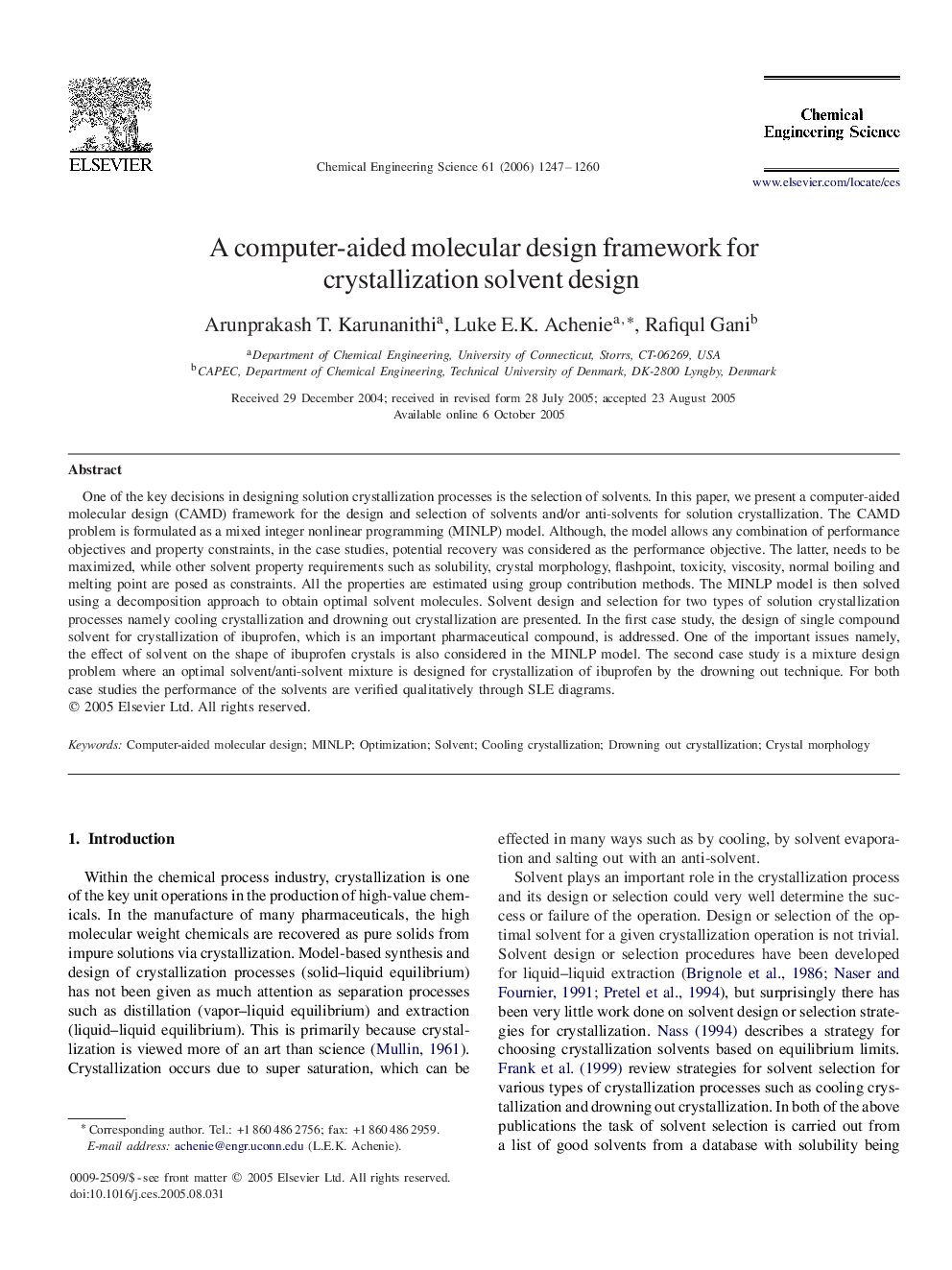| کد مقاله | کد نشریه | سال انتشار | مقاله انگلیسی | نسخه تمام متن |
|---|---|---|---|---|
| 159098 | 457026 | 2006 | 14 صفحه PDF | دانلود رایگان |

One of the key decisions in designing solution crystallization processes is the selection of solvents. In this paper, we present a computer-aided molecular design (CAMD) framework for the design and selection of solvents and/or anti-solvents for solution crystallization. The CAMD problem is formulated as a mixed integer nonlinear programming (MINLP) model. Although, the model allows any combination of performance objectives and property constraints, in the case studies, potential recovery was considered as the performance objective. The latter, needs to be maximized, while other solvent property requirements such as solubility, crystal morphology, flashpoint, toxicity, viscosity, normal boiling and melting point are posed as constraints. All the properties are estimated using group contribution methods. The MINLP model is then solved using a decomposition approach to obtain optimal solvent molecules. Solvent design and selection for two types of solution crystallization processes namely cooling crystallization and drowning out crystallization are presented. In the first case study, the design of single compound solvent for crystallization of ibuprofen, which is an important pharmaceutical compound, is addressed. One of the important issues namely, the effect of solvent on the shape of ibuprofen crystals is also considered in the MINLP model. The second case study is a mixture design problem where an optimal solvent/anti-solvent mixture is designed for crystallization of ibuprofen by the drowning out technique. For both case studies the performance of the solvents are verified qualitatively through SLE diagrams.
Journal: Chemical Engineering Science - Volume 61, Issue 4, February 2006, Pages 1247–1260